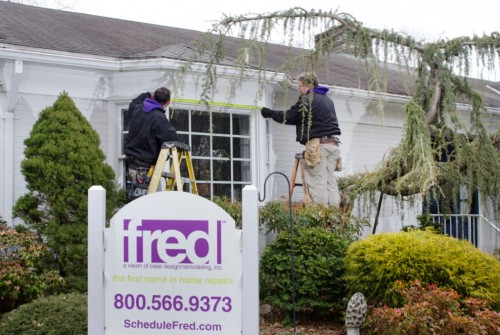Every home ever built has trim work on the exterior. Trim can be found around windows, doors, corners, chimneys, behind gutters, and where the roof meets the walls. The trim on most of these homes is a primed and painted wood material. Wood is porous and susceptible to water penetration, eventually causing it to rot. When replacing rotten trim boards, you have options. One of those options is to replace the boards with that of a PVC material.

PVC stands for polyvinyl chloride. PVC is most commonly found in the plumbing systems of your home. PVC is a synthetic plastic polymer, and because it is a plastic, water will not affect it. In recent years, it has become more and more common to replace exterior trim with PVC trim boards due to the low maintenance properties and longevity of the product. PVC costs slightly more than wood, but my experience has been that the benefits far outweigh the costs involved. When wood rots, water is free to enter the home, causing drywall damage, framing rot, and a number of other problems. These problems can be eliminated when you use a product that water cannot penetrate.

There are some downsides to using PVC. One being that PVC cannot be painted dark colors. It must be painted with a paint that has a Light Reflective Value of 55 units or greater. Any paint store can guide you to a color that meets these qualifications, but if your home has darker trim, PVC may not be the best option. Another downside is that PVC is very hard to work with in cold weather, making it harder to use the product should you decide to do the work in the winter time. You must also be mindful of HOA and Historic restrictions. Many homeowners associations and historic districts require approval before installing the product. Always check with your homeowners association before you undertake any type of exterior work.
